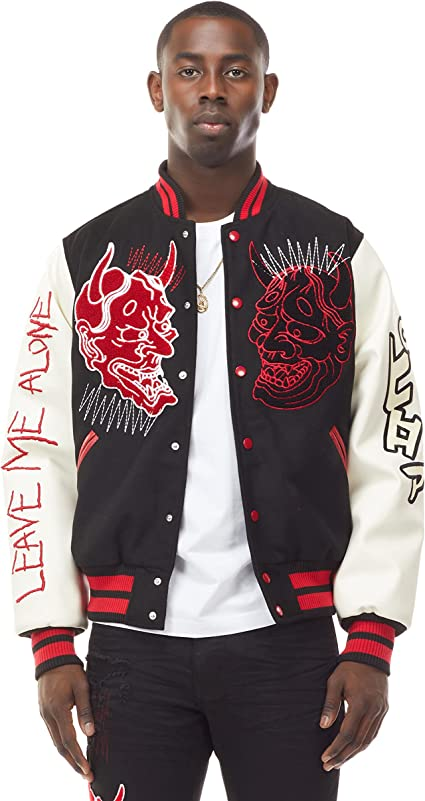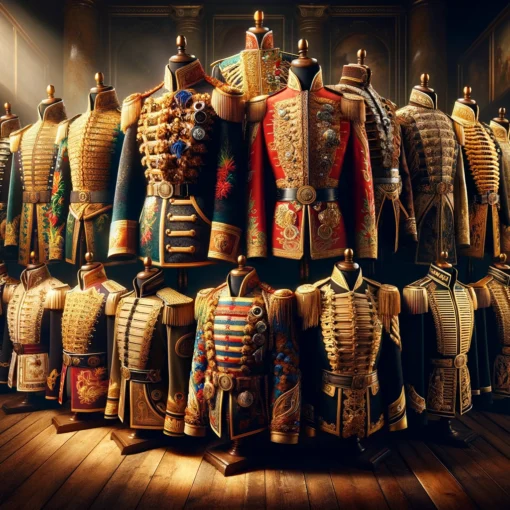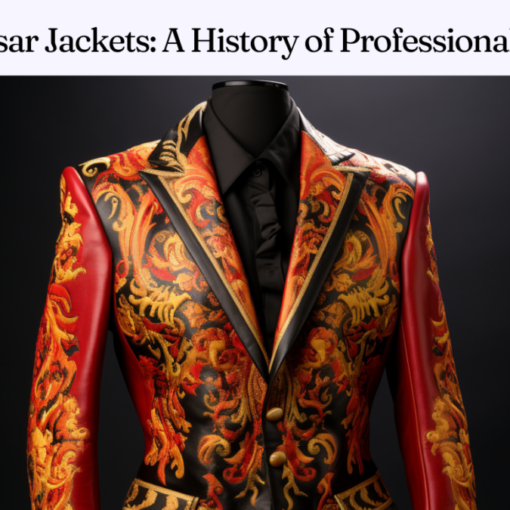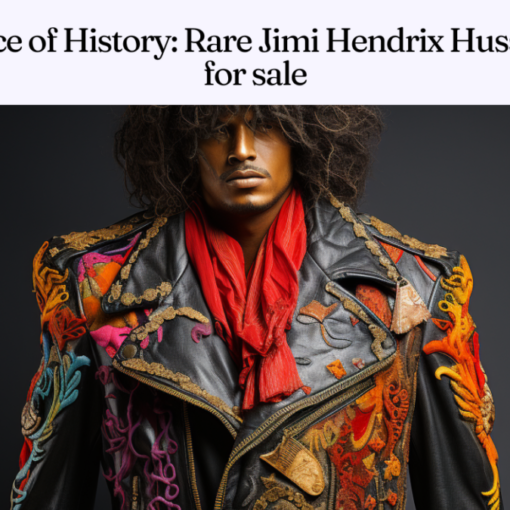Hussar jackets are a type of military jacket popularized in the late 1700s and early 1800s. They have since become a fashionable item, and today, many people are turning to hussar jacket reproduction to get a piece of the iconic look. This article will explore the introduction of the Hussar Jacket, its key features, reproduction process, and its impact.
Introduction of Hussar Jacket
The Hussar Jacket is a distinctive military-style jacket originating in Central and Eastern Europe during the 18th and 19th centuries. It is closely associated with the cavalry regiments known as Hussars, who were renowned for their daring and flamboyant style of warfare.
The Hussar Jacket features a double-breasted front with rows of ornate buttons, wide lapels, and a stand-up collar. The jacket is often adorned with intricate braiding, frogging (looped decorative fastenings), and epaulets on the shoulders. These embellishments, along with the use of rich fabrics such as velvet or brocade, contribute to the jacket’s striking and regal appearance.
Hussar Jackets were originally worn as part of the military uniforms of Hussar regiments, which were cavalry units known for their fast-paced, light cavalry tactics. However, over time, the distinctive style of the jacket became popular beyond the military and found its way into civilian fashion. Today, the Hussar Jacket is often seen as a symbol of elegance, prestige, and historical military fashion.

Key Features of Hussar Jacket
Intricate Braiding: The jacket is adorned with intricate braiding that runs along the front, cuffs, and collar. The braiding is typically made of contrasting colors and adds a touch of elegance and grandeur to the garment.
Frogging and Epaulettes: The front of the jacket is often embellished with frogging, which consists of loops and buttons arranged in decorative patterns. Epaulets, often adorned with fringes or tassels, are also on the shoulders, enhancing the military aesthetic.
Stand-Up Collar: The jacket features a stand-up collar that adds a commanding and regal presence. The collar can be stiff or have a soft roll, depending on the specific design.
Wide Lapels: The lapels of the Hussar Jacket are wide and prominent, adding a touch of sophistication to the garment. The lapels can be decorated with braiding or have contrasting colors to create visual interest.
Double-Breasted Closure: The jacket often features a double-breasted closure with rows of buttons. This design element adds a touch of formality and provides additional structure and durability to the garment.
Decorative Buttons: The buttons on the jacket are often ornate and serve both functional and decorative purposes. They can be made of metal or covered with fabric, featuring intricate designs that complement the overall aesthetic.
Cuffs with Braiding: The jacket’s cuffs are typically embellished with braiding, mirroring the braiding found on the front of the jacket. This detail adds a cohesive and polished look to the overall design.
Rich Fabrics: The Hussar Jacket is traditionally crafted from rich, luxurious fabrics such as velvet, brocade, or wool. These materials provide durability and enhance the opulent and prestigious nature of the garment.
Shoulder Wings: Some variations of the Hussar Jacket feature shoulder wings, which are decorative fabric pieces extending from the shoulder area. These wings add extra flair and visual interest to the overall design.
The Reproduction Process of Hussar Jacket
Research and Reference Gathering: Extensive research and gathering of references form the foundation for accurate reproduction. Artisans delve into historical archives, museum collections, and existing examples of Hussar Jackets to understand the original garment’s design elements, construction techniques, and decorative details.
Artisans develop patterns based on gathered references and research. They analyze the construction of the original jacket, take precise measurements, and create a pattern that captures the intricate cut and shape of the garment, paying attention to every detail.
Material Selection: Artisans strive to find materials that closely match those used in historical Hussar Jackets, which includes sourcing high-quality fabrics, decorative trims, braids, and buttons that replicate the original design and reflect the reproduced era’s style and quality.
Construction and Tailoring: Skilled craftsmen and seamstresses cut the fabric based on the developed patterns and meticulously stitch the components together. Tailoring techniques are employed to shape the collar, add darts for a proper fit, and recreate the characteristic silhouette of the Hussar Jacket.
Embellishments and Decorations: Artisans use traditional techniques like hand embroidery, braiding, and appliqué to recreate the ornate designs found on the original jackets. Attention is given to replicating the decorative elements’ patterns, colors, and positioning.
Finishing Touches: The final step involves adding the finishing touches to the reproduction Hussar Jacket. Careful pressing, trimming loose threads, and inspecting for imperfections ensure a polished garment is ready to be worn and admired, showcasing the artistry and craftsmanship involved in its creation.
The Impact of the Reproduction Movement
The reproduction movement of the Hussar Jacket has brought new life to historical fashion, rekindling interest in the traditions and aesthetics of bygone eras. This movement safeguards cultural heritage and promotes a deeper understanding of human history by preserving and recreating garments like the Hussar Jacket.
The impact of the Hussar Jacket reproduction movement on historical fashion is significant and positive. These forgotten historical fashions are revived by reproducing the Hussar Jacket and other classic garments, sparking historical interest among people and serving as a source of inspiration and reference for designers and fashion enthusiasts. The reproduction movement ensures the continuation of the distinctive military style of the Hussar Jacket, gaining renewed appreciation and development in contemporary society.
The reproduction movement of the Hussar Jacket contributes to the preservation and inheritance of cultural heritage. As a long-standing military attire, the Hussar Jacket carries aesthetic concepts, social values, and craftsmanship from specific eras. By protecting and reproducing the Hussar Jacket, people can preserve this valuable cultural heritage and pass it on to future generations. Which helps people better understand and appreciate the cultural aspects of past eras, promoting the protection and dissemination of cultural diversity.
Conclusion
The Hussar Jacket is a distinctive military-style jacket originating in Central and Eastern Europe during the 18th and 19th centuries. It is closely associated with the cavalry regiments known as Hussars, renowned for their daring and flamboyant style of warfare. The jacket features a double-breasted front with ornate buttons, wide lapels, and a stand-up collar, often adorned with intricate braiding and embellishments. The Hussar Jacket has transcended its military origins and has become a symbol of elegance, prestige, and historical military fashion.
FAQs
Are reproduction Hussar Jackets made using traditional methods?
Many reproduction Hussar Jackets strive to replicate the traditional methods and techniques used in the past, ensuring authenticity. Skilled artisans often employ hand embroidery, meticulous tailoring, and careful material selection to recreate the magic of the original jacket.
Can I customize a reproduction Hussar Jacket?
Some artisans offer customization options, allowing you to personalize certain aspects of the reproduction jacket according to your preferences, including selecting specific colors, embellishments, or even incorporating personalized embroidery.
Are reproduction Hussar Jackets suitable for both men and women?
The reproduction movement aims to make the Hussar Jacket accessible and wearable for people of all genders. Designers create variations that cater to different body types and style preferences, ensuring everyone can enjoy this iconic garment’s splendor.
What is a hussar jacket?
Historically known as a pelisse, a hussar jacket is a distinctive short jacket adorned with fur trimmings. It originated in the 17th century and was predominantly worn by hussar light-cavalry soldiers. These jackets were typically worn loosely, draping over the left shoulder to protect sword cuts during battle.



